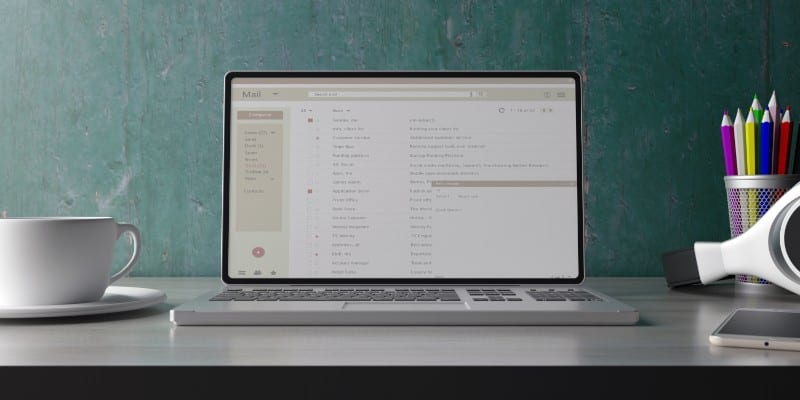Sending out promotional and marketing emails can be a great way to spread the news about your business and what you can offer. It can be difficult to find the middle ground between not sending enough and losing your customer’s attention and sending too many emails and annoying your customers. So how often should you be sending out marketing emails?
This article will discuss how to decide the frequency of your marketing emails, including a newsletter, and ways to build up your email list.

Table of Contents
Marketing Email
Email marketing is a form of direct marketing that uses emails to help promote your business’s products and services. An email marketing campaign is the basis for any other email marketing actions. The campaign should be a storyboard for any following actions. A successful email marketing campaign will get the recipients to take action. Your audience will engage with your business and help you get more leads and sales. There are a handful of email marketing platforms that can also assist in the effectiveness of your marketing emails.
Now that you have decided to start email marketing, how often should emails actually be sent from your business? Timing is a huge component to sending out marketing emails. How often your company sends out emails can have a significant effect on your company revenue and how your audience engages with your emails. There are a variety of factors to consider when discussing the frequency of emails.

Factors for Frequency of Emails
Industry Stats
How often are other emails marketers sending their emails? The frequency of your competitor’s emails can set the scene as to what your audience expects from you. Consider taking a look at their ROI. See what works for other companies and what doesn’t. Learning from your competitors can make the process much easier for your own company.
Nature of Products or Services
What exactly are you offering your customers? Your answer will impact the frequency of the emails you send. For example, a business for winter gear would send more emails in the winter while a news agency may be sending daily emails to keep their audience informed. Seasonal products will different in both the type and frequency of emails that should be sent out.
Your Goals
What are your goals for your email marketing? What is the point? Your answer could range from trying to entice people to purchase a product, to filling out a form. The nature of your emails determines how your audience will react to your future emails. Keep in mind that your business’ very first email is the most important. It will dictate if your audience will engage with your business or if they will simply just click through your emails.

Customer Interest
A good option is to let each subscriber decide how often they get emails through a preference center. 69% of US email users unsubscribe because of “too many” emails. If customers have control over the type and frequency of emails, they are far more likely to engage positively.
The end goal is to keep your audience engaged without annoying them with too many emails and to avoid having them forget your company’s existence. It can be difficult to find an effective balance between the two. So, now that you have an idea of the concepts that should be a part of your decision, you can look at just how many emails you should actually be sending.
So, how often should you email your contact list? The frequency of your emails is an important question to consider for any email marketing campaign. Some basic email frequency options include,
Once a Month
Sending out emails once a month can be a really smart choice for some companies. 86% of customers would prefer to receive promotional emails at least once a month. While monthly could be the best choice for your company based on your products and services, it could also be a risk. Simply put, your customers may forget about you if you only send out tests once a month.
Once a Week
Sending out emails once a week is a sweet spot for many businesses. Again, email frequency should depend on the nature and purpose of the emails. Sending less than one email once a week could mean that you are missing out on sales opportunities. You also risk that your audience will become disengaged. On the other hand, sending out too many emails may annoy your audience enough to have them delete your emails or unsubscribe. That’s why sending out an email once a week is ideal for many companies.
Once a Day
The frequency and quantity of emails that you send out should be mindful of what your customer is looking for. Keep in mind that the number one reason people unsubscribe from marketing emails is because they get too many of them.
Another risk of sending emails once a day is incurring a higher click-through rate, or CTR. If your business sends out daily emails, it is essential to ensure that the content you are spreading is of high quality and will keep your audience interested.
Of course, there are many variations that your company could employ instead. Let’s say, for example, your company was looking to increase their frequency of emails from once a month to once a week. This shift should not be a leap, but a steady increase. First start off with twice a month and then move on to once a week. Your customers don’t want to be surprised by sudden emails. They want consistent and high-quality content and information.
Once you have decided the best amount of emails your business should send out, the next step is to make sure your emails are as effective as they can be. Think about how to ensure effective email marketing. For any new endeavor for your business, research is essential. There are also many digital marketing services out there to consider to help you with your email marketing campaign.

Email Newsletter
Email newsletters are a form of email communication sent out to inform your audience of updates about your company. They are used in a variety of ways and come in many different forms, but often include the latest news and tips of your business. Newsletters are an essential part to any email marketing strategy. They allow businesses to cultivate the relationship of your business with your customers.
To create an effective email newsletter, your first step is to set your goals and strategies. These goals and strategies should be aligned with your overall email marketing goals. Consider what you are looking to get out of creating this newsletter. It is also important to ensure that you are sending out the right messages to your audience.
Identify Your Target Audience
Deciding who is included in your audience is essential to the success of your email marketing campaign. Once you understand the wants and needs of your readers, you can begin creating content that is full of value for the. Consider things like demographics, locations, interests of your viewers.
Determine Basic Objectives
Setting goals gives your newsletter a purpose to help measure the performance of your efforts. What do you want to achieve with your email newsletter? Are you looking to drive traffic to your website, increase sales to an online shop, or perhaps you want to invite recipients to upcoming events? Once your objectives have been determined, you can later learn if your newsletter was successful.
Define Your Content
The content that you feature in your newsletter should be relevant to the reader. Often newsletters include information that is useful, like tips or links to articles, tutorials, and guides. Newsletters also include information that is newsworthy, like updates to your business in particular or the industry as a whole. The topics that you include in your newsletter should be closely connected with the objectives that you have determined for your campaign.

Capturing Email Addresses
The first step to your email marketing campaign is building up your email list. Your email list should include the people who are actually interested in the products and services that you have to offer. This audience are your potential and current customers. The relationships you have with these people should be cultivated and well preserved because these are the customers that will help grow your business.
So, how exactly do you build an email list?
Describe Your Value
Across your platforms, show what being added to your email list can offer your customers. Promote your newsletter or certain promotions you can or will include in your email marketing. Show your audience your value and what you can offer them by including them in the email list.
Offer Your Value
Consider what about your emails can benefit your customers. If your customers gain nothing of value from your emails, why would they continue to open and read them? When you ask for a customer’s email, make sure that you are offering them something valuable in exchange. This could be a coupon, early access to new products or services, high quality content, a chance to win a prize, etc. There are dozens upon dozens of valuable things to include in your emails.
Get Personal
Rather than sending out a mass email to everyone on your list, segment your users based on the recipient’s interests. No matter what, it is always useful to build the demographics of your audience. When you learn more about your database, you can have far more effective marketing.
Use Popups
A popup might initially sound bothersome or annoying but in actuality it can be very rewarding. A popup allows users to be offered relevant content. There are a variety of different kinds of popups that can be put into place on your website.
Make it Easy
Make it simple for people to sign up for any newsletter or other marketing emails you can send. At multiple points of contact, ask your customers if they want to be added to your list. Collect addresses at every contact point.


Contact Us Today!